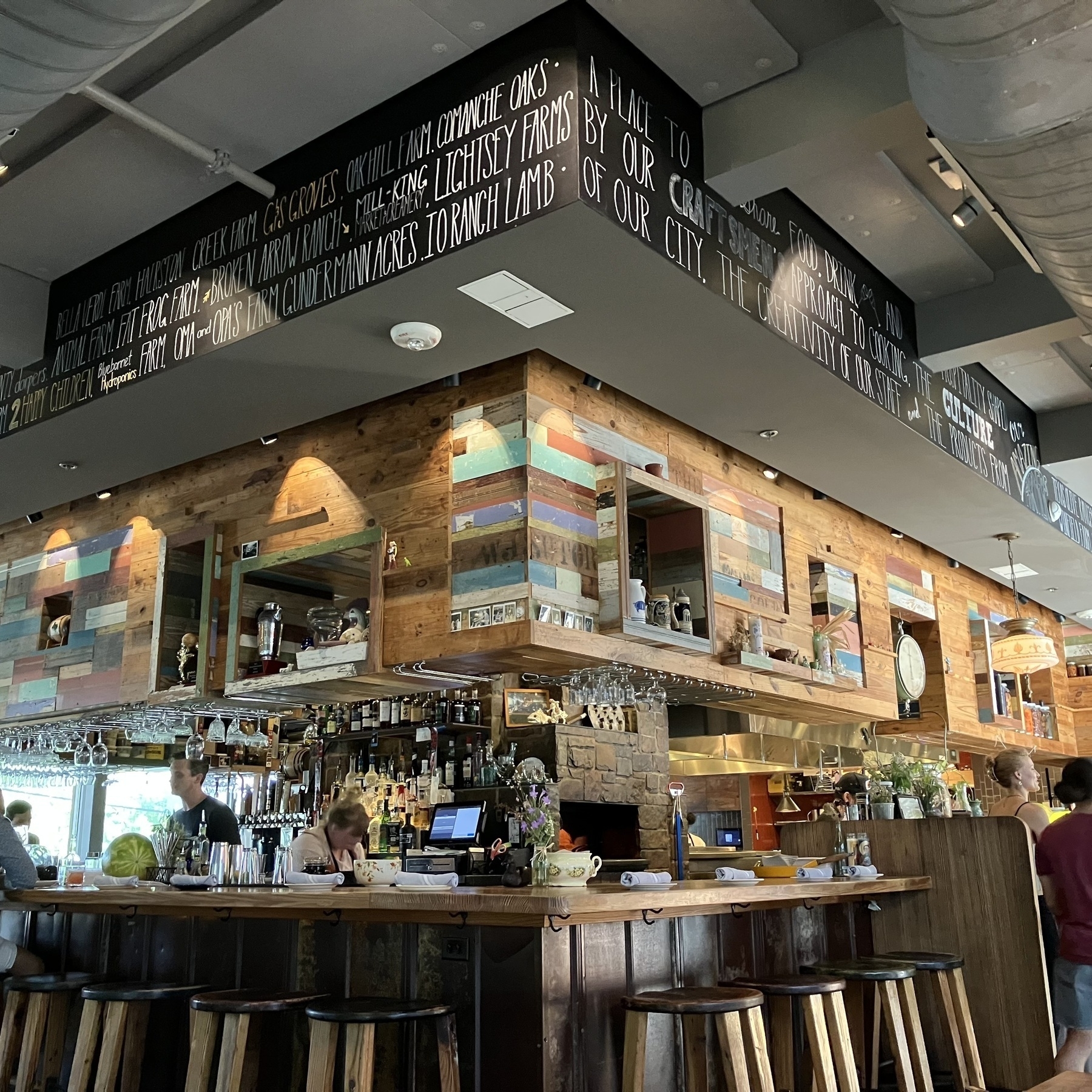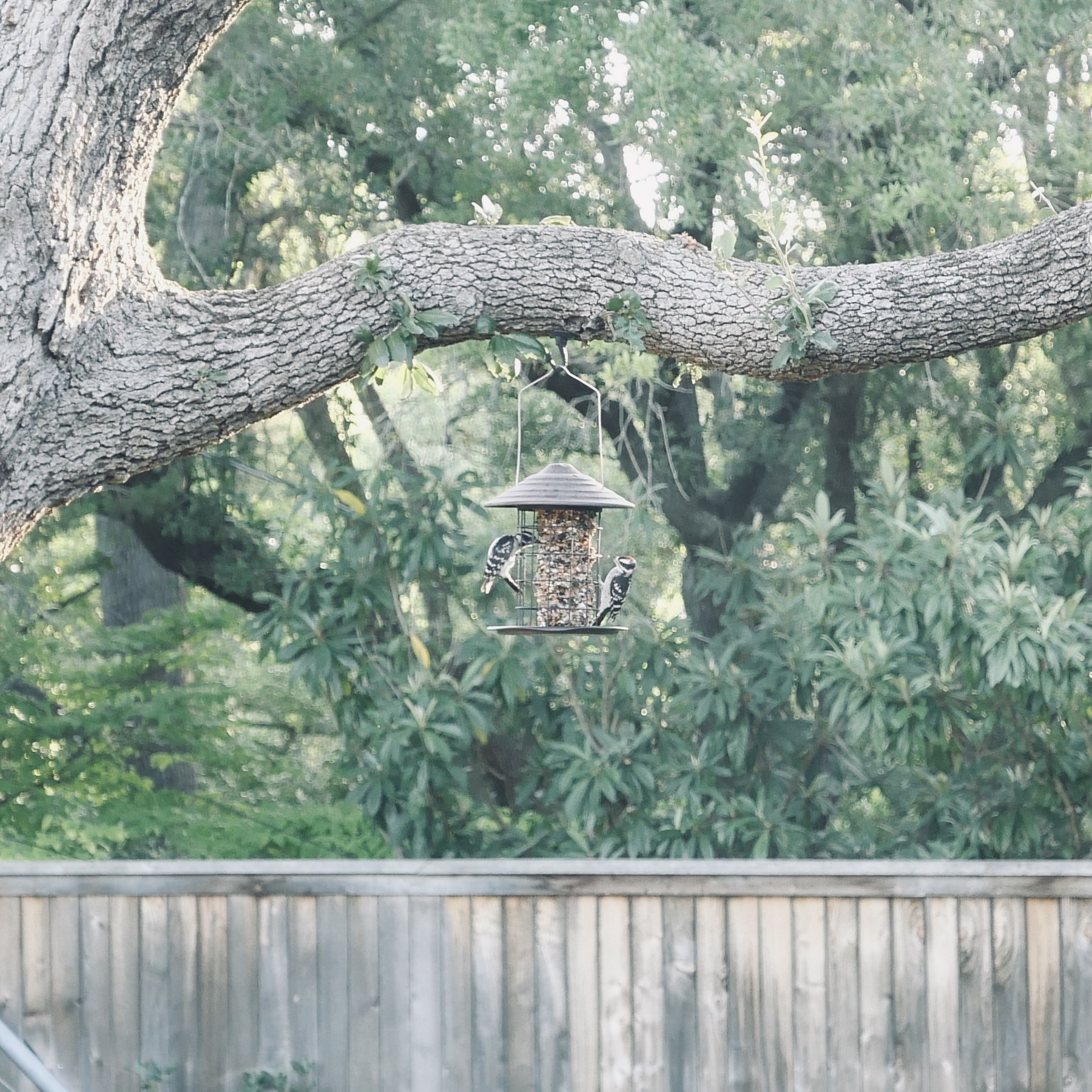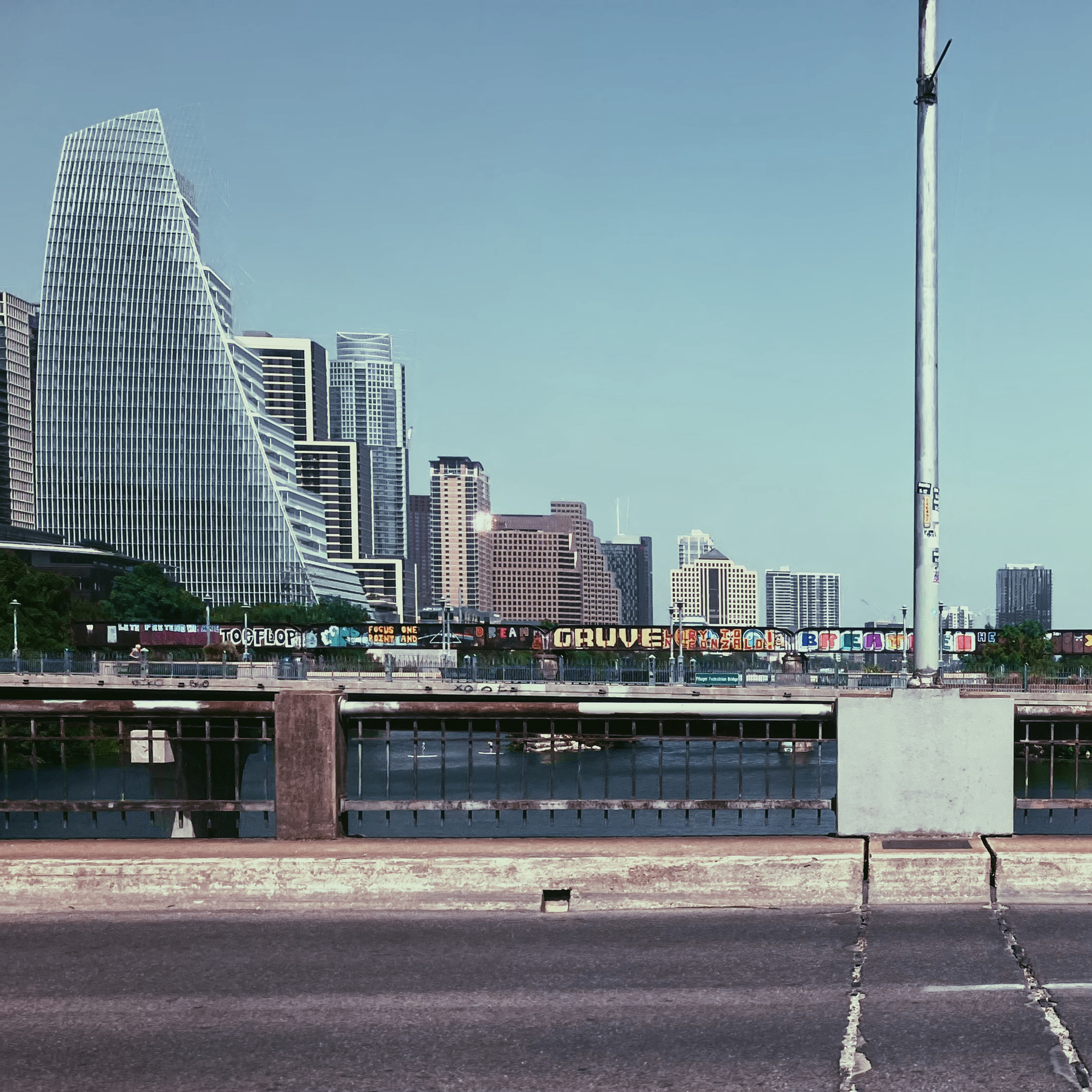bodies and stones
In Breaking Bread with the Dead, I write about Donna Haraway:
There's a fascinating early chapter in her book on human interaction with pigeons. Of course, that interaction has been conducted largely on human terms, and Haraway wants to create two-way streets where in the past these paths ran only from humans to everything else. How to get the pigeons to participate willingly in such a project is question without an obvious answer, but it's question that Haraway feels we must ask, a because “staying with the trouble requires making oddkin; that is, we require each other in unexpected collaborations and combinations, in hot compost piles. We become-with each other or not at all.”
But here's the complication: Who gets included in “each other”? Besides pigeons, I mean. Haraway says explicitly that her human kin are “antiracist, anticolonial, anticapitalist, proqueer feminists of every color and from every people,” and people who share her commitment to “Make Kin Not Babies.” “Pronatalism in all its powerful guises ought to be in question almost everywhere.”
I suspect that — to borrow a tripartite distinction from the psychiatrist and blogger Scott Alexander — most people who use that kind of language are fine with their ingroup (“antiracist, anticolonial, anticapitalist, proqueer feminists of every color and from every people”) and fine with the fargroup (pigeons), but the outgroup? The outgroup that lives in your city and votes in the same elections you do? Maybe not so much. Does the project of making kin extend to that couple down the street from you who have five kids, who attend a big-box evangelical church, and who voted for the wrong person in the last presidential election? And who, moreover, are a little more likely to talk back than pigeons are? (Even assuming that they might be interested in making kin with Donna Haraway, which, let's face it, is equally unlikely. Presumably they too would be more comfortable with the pigeons.)
I thought about these issues as I read an excerpt from James Bridle’s new book:
A system of laws and protections developed by and for humans, that places human concerns and values at its core, can never fully incorporate the needs and desires of nonhumans. These judicial efforts fall into the same category of error as the mirror test and ape sign language: the attempt to understand and account for nonhuman selfhood through the lens of our own umwelt. The fundamental otherness of the more-than-human world cannot be enfolded into such human-centric systems, any more than we can discuss jurisprudence with an oak tree.
Legal representation, reckoning, and protection are founded upon human ideas of individuality and identity. They may prove useful when we take up the case of an individual chimp or elephant, or even a whole species, but their limits are clear when we apply them to a river, an ocean, or a forest. A plant has no “identity;” it is simply alive. The waters of the earth have no bounds. This is both ecology’s meaning and its lesson. We cannot split hairs, or rocks, or mycorrhizal roots and say: This thing here is granted personhood, and this thing not. Everything is hitched to everything else.
The enactment of a more-than-human politics calls explicitly for a politics beyond the individual, and beyond the nation-state. It calls for care, rather than legislation, to guide it.
As regular readers might expect, this call for care, this ecological perspective, resonates powerfully with me. (It also resonates with something I wrote about in another book: Simone Weil’s insistence that if we need a collective declaration of human rights, we also, and perhaps more desperately, need a declaration of human obligations.)
But it is curious to me that many people are willing to entertain this line of thought, are immensely sympathetic to this line of thought, who also affirm that “in relation to the mind the body has no rights”; and that a fetus in the womb is but an insignificant “clump of cells.” I don’t think you can consistently hold all those views. If you are willing to ask, “What do we owe the more-than-human world?” then, I think, you must also be willing to ask, “What do we owe the fetus in the womb? What do we owe our own bodies?” If you’re not asking these questions, then I fear that the other affirmations are empty rhetoric — a make-believe extension of agency to things you can then safely ignore.
From my essay ”You Are Not a Server”, on Dickensian characters:
To begin to cite examples is a dangerous thing. Once embarked on that journey, how would one end it? How could one mention the circumlocutions of Mr. Tite Barnacle without also mentioning the unctuousness of Uriah Heep, the commitment to Fact of Mr. Gradgrind, the endless compassion of Little Dorrit? Lo, I have already commenced. They are all infinitely memorable because they are all infinitely excessive; they are, as it were, nothing but surplus. They always remind us of the possibility of living at an outsize scale, of being simply more than anyone could expect, more than any reasonable person would ask for. If they seem mere caricatures, that may say something more about our crimped and confined moment than about them. They are a constant encouragement to expand rather than contract one’s options.
And that is why we need to read Dickens, now more than ever.
I published this a couple of months ago, but I don’t think I mentioned it here?
Currently listening: Aaron Copland, Appalachian Spring ♫
I’ve just revised and edited the page where I list the major themes of my big blog and link to the relevant tags. I don’t know whether this is useful to anyone else, but it’s useful to me. I’ve been writing that blog a long time, and sometimes I forget what’s there.
Remembering a visit to Sanibel with dear friends….

Currently listening: Wood Works by Danish String Quartet ♫
less Tono, more Bungay
After writing my reflection on Tono-Bungay, I read Adam Roberts’s thoughts in his excellent literary biography of Wells — you can read almost the same account in this blog post — and was interested to see that Adam talked about all sorts of really important things that I had totally neglected. And yet I still think that my take on the book is valid and useful. It’s an indication of the book’s quality, I think, that such widely divergent readings can nevertheless capture real insights into its world.
One brief thought: Adam’s portrayal of Uncle Ponderevo as a cokehead — twitching, full of nervous energy, increasingly obese and yet simultaneously somehow withered — echoes Wells’s portrayal of modern London as hypertrophied, massively diseased. Uncle Ponderevo as London in microcosm; London as a macrocosmic Uncle Ponderevo. (Which is, by the way, a very Adam-Robertsian theme: see, e.g., Swiftly, the first novel of his I read, with its conceit that Gulliver’s Travels was reportage, not fiction.)
I wrote about mechanization, illiberalism, and the attempt to create a monoculture. Part of my ongoing work on plurality and pluralism.
Mechanization and Monoculture, by me:
Indeed, it seems to me that the one indisputable thing we can say about our current illiberalisms, of the left and the right (and this is the first of several theses I seek to promulgate here): All illiberalisms are intrinsically mechanistic. It is always their goal for mechanization to take command—as long as mechanization serves their ends. It does not seem to occur to them to ask, with Giedion, whether mechanization ever actually does serve human ends. Which leads us, I think, to a corollary thesis: Insofar as illiberalism is mechanistic, it is inhuman.
I have to admit that I like this essay — I think it’s a step forward in my attempts to think through the virtues of the plural world and the dangers of monism, to which so many are tempted. This essay is a step forward because it properly describes the end product of monism, which is a monoculture — I’m framing my analysis in ecological terms, which are, I believe, the right terms.
Natural ecology, media ecology, social ecology — that’s what I need to be thinking about, especially since all of these ecologies overlap to create a single planetary ecology in which Homo sapiens is the apex predator, but one that often preys on itself.
excerpt from my Sent folder: nodes
I try to make the best of the blogging environment, but I have always been fascinated by Jorn Barger's early-web idea of what he called “single-layer web design” — it's ironic that he is sometimes called the inventor of the weblog, because while he was one of the first to create a reverse-chronological list of links, that's pretty much all they were, links, not developed ideas. Almost all of his Robot Wisdom site has disappeared since he abandoned the web some 20 years ago — I think the only thing left is this mirror of his James Joyce page.
But when I started making my actual home page, this is the model I had in mind: all the relevant information and necessary links on a single page, written in absolutely bare-bones HTML. And if I had the technical chops to do it, I'd ditch the blog and make my entire web presence a series of about five pages, each of which would be a kind of topical node, and each of which would continually in revision. Maybe one of them would be a Barger-style link-weblog, or I might just use micro.blog for that.
For example: like you, I am deeply attached to revising my posts — one recent case:

Thirteen revisions is on the low side for a longer post. Often I'm correcting spelling errors or tweaking the style, but sometimes I go in and use a <mark> tag to highlight; I might add an UPDATE, or, if I don't like the way an update would make the post look, I'll hop over to txt.fyi and write up an appendix and then link to it (I should probably make a page at ayjay.org, since txt.fyi could disappear at any time, but usually I'm too lazy). I also will sometimes help generate what I think of as internal dialogism — sorry for the fancy language — by using the <details> tag.
But what I really want is the ability to make several pages that use all these tricks and more: highlights, details, footnotes, appendices, digital sticky notes, and (maybe above all) versioning — the ability for readers to diff, as it were.
Four or five topical nodes, ever-expanding, linking out and back, commenting on itself, inviting commentary from others, etc. etc. THAT would be the coolest thing ever, to me. In fact, I might start experimenting with a basic page structure that would allow a first approximation of this vision....
And this Yaupon tea pannacotta with fresh peaches and granola … I don’t even have words.

Odd Duck Austin is one of my favorite eating/drinking places.

Currently reading: What They Heard by Luke Meddings 📚

Learning a lot from this FIFA map. For instance, Denver is now where Bozeman used to be; Dallas where Kansas City used to be; Kansas City where Des Moines used to be; Cincinnati where Toledo used to be; Nashville where Louisville used to be; and Atlanta where Nashville used to be. Gotta remember this for upcoming drives.
P.S. I ended up finally reading Tono-Bungay because, at a bookstore in Austin, I found a beautiful old Heritage Press edition of the novel for eight bucks! Perfect condition first edition from 1960.


It even included the Heritage Press newsletter that accompanied its books:

A delightful way to read an outstanding novel.
Tono-Bungay
My friend Adam Roberts has written extensively about this book, but because I knew I wanted to read it, I have avoided reading Adam’s account. I’ll now go back to see what he says, which may make me repent of everything I say here. But there’s value in just getting your thoughts down without too much editing. Also: many spoilers ahead.
H. G. Wells’s Tono-Bungay is a powerful but oddly constructed novel. It’s a bit difficult to describe that structure but here are what I believe to be the key elements:
-
It is most famously a story about commerce, and especially commerce based in advertising. Tono-Bungay is a patent medicine that does no one any good and might do them a little bit of harm – though its inventor, Edward Ponderevo, thinks that it might have positive psychological benefits that would justify his selling it. (Placebo effect, etc.) So the part of the novel most often commented on, what many critics would describe as the story, is about how Tono-Bungay is manufactured, advertised, and distributed throughout the United Kingdom. The business is, of course, a house of cards that is bound to collapse and eventually does.
-
But this is also a story about a man who is repeatedly thwarted in love. George Ponderevo, the narrator and protagonist, has a failed marriage, some casual affairs, and an unrequited or at least unfulfilled love for a woman – named, ironically enough, Beatrice – whom he meets when they are children and whom he definitively loses when they are middle-aged. One of the first important scenes in the book concerns his initial infatuation with Beatrice and – except for a coda which I will describe later – the book concludes with his final sight of her. (Because they are mismatched socially, the whole situation is quite like that of like Pip and Estella, with the unhappy rather than the happy ending.) Because his love for Beatrice is so prominent at the beginning and at the end of the novel, and because the middle of the novel is so occupied by his failed marriage to a woman named Marion, if I had to say whether this book is a story about commerce in advertising or a story about failed love, I would choose the latter.
-
The third element of the story is a contrast between the fixed character of social life in the world of English countryside and its small towns — a world controlled by a declining and ossifying aristocracy — and the immense energy and mobility of life in London. After early chapters establishing the rigidity of life on a country estate where George’s mother is the housekeeper, and in a sleepy small town dominated by another aristocratic family, the scene moves to London. We’re then treated to an extended panoramic celebration of the city narrated by the awestruck young George. “I got London at last with an exceptional freshness of effect, as the sudden revelation of a whole unsuspected other side to life.” More:
I came to it on a dull and smoky day by the South Eastern Railway, and our train was half an hour late, stopping and going on and stopping again. I marked beyond Chiselhurst the growing multitude of villas, and so came stage by stage through multiplying houses and diminishing interspaces of market garden and dingy grass to regions of interlacing railway lines, big factories, gasometers and wide reeking swamps of dingy little homes, more of them and more and more. The number of these and their dinginess and poverty increased, and here rose a great public house and here a Board School and there a gaunt factory; and away to the east there loomed for a time a queer, incongruous forest of masts and spars. The congestion of houses intensified and piled up presently into tenements; I marveled more and more at this boundless world of dingy people; whiffs of industrial smell, of leather, of brewing, drifted into the carriage; the sky darkened, I rumbled thunderously over bridges, van-crowded streets, peered down on and crossed the Thames with an abrupt eclat of sound. I got an effect of tall warehouses, of grey water, barge crowded, of broad banks of indescribable mud, and then I was in Cannon Street Station — a monstrous dirty cavern with trains packed across its vast floor and more porters standing along the platform than I had ever been in my life before. I alighted with my portmanteau and struggled along, realising for the first time just how small and weak I could still upon occasion feel. In this world, I felt, an Honours medal in Electricity and magnetism counted for nothing at all.This contrast between country and city is really key to everything else: surely Tono-Bungay is one of the great London novels. When Edward Ponderevo, George’s uncle, lives in a small town, trying to eke out a living as a chemist, he continually complains about the impossibility of making anything happen in such a catatonic place, and only when he is forced by bankruptcy to move to London and take up a menial job does he actually have the opportunity to create Tono-Bungay – and more important, to create a market for Tono-Bungay. It is the concentration of people in London that enables his creation to go viral. London, the viral city, in multiple ways.Afterwards I drove in a cab down a canyon of rushing street between high warehouses, and peeped up astonished at the blackened greys of Saint Paul’s. The traffic of Cheapside — it was mostly in horse omnibuses in those days — seemed stupendous, its roar was stupendous; I wondered where the money came from to employ so many cabs, what industry could support the endless jostling stream of silk-hatted, frock-coated, hurrying men.
London also puts people in touch with one another who in the countryside or in small towns would either not meet at all or meet only in constrained circumstances. George marries Marion, whom he has little in common with – something he comes to understand even before their marriage – but it’s only because they both live in London that they ever encounter one another. They have certain trivial habits or quasi-interests in common; everything between them arose from a chance encounter of strangers, the kind that almost never happens in the countryside but happens a dozen times a day in London. Their marriage ends because George has an affair with a young woman who works as a typist for his company – again, a connection that only the energy, congestion, and economic drive of the city makes possible.
It is noteworthy that George’s failed relationship with Beatrice happens almost wholly in the countryside, while his failed marriage to Marion happens in the city. His love for Beatrice is doomed by a world that’s too inflexible; his attachment to Marion – which he sees as a “hunger,” not as genuine romantic love – is produced by a world that’s too unbounded.
So one of the things that Wells wants to talk about here is London as a kind of universal solvent, a force powerful enough to disintegrate the long-established social structures of British life, and while we know where Wells’s sympathies lie – he despises the old division of social classes – nevertheless he is quite aware that a universal solvent will occasionally end up dissolving things that shouldn’t be dissolved.
At the end of the book, we get an epilogue in which we’re treated to another vista of London, this time as it appears from the Thames:
To run down the Thames so is to run one’s hand over the pages in the book of England from end to end. One begins in Craven Reach and it is as if one were in the heart of old England. Behind us are Kew and Hampton Court with their memories of Kings and Cardinals, and one runs at first between Fulham’s episcopal garden parties and Hurlingham’s playground for the sporting instinct of our race. The whole effect is English. There is space, there are old trees and all the best qualities of the home-land in that upper reach. Putney, too, looks Anglican on a dwindling scale. And then for a stretch the newer developments slop over, one misses Bladesover [the country house in which the book begins] and there come first squalid stretches of mean homes right and left and then the dingy industrialism of the south side, and on the north bank the polite long front of nice houses, artistic, literary, administrative people’s residences, that stretches from Cheyne Walk nearly to Westminster and hides a wilderness of slums. What a long slow crescendo that is, mile after mile, with the houses crowding closelier, the multiplying succession of church towers, the architectural moments, the successive bridges, until you come out into the second movement of the piece with Lambeth’s old palace under your quarter and the houses of Parliament on your bow! Westminster Bridge is ahead of you then, and through it you flash, and in a moment the round-faced clock tower cranes up to peer at you again and New Scotland Yard squares at you, a fat beef-eater of a policeman disguised miraculously as a Bastille.We are moving through time: from the ancient English countryside to the city whose function was, for a long time, to consolidate the power of the rural elite, and now into modernity:
And then the traditional and ostensible England falls from you altogether. The third movement begins, the last great movement in the London symphony, in which the trim scheme of the old order is altogether dwarfed and swallowed up. Comes London Bridge, and the great warehouses tower up about you, waving stupendous cranes, the gulls circle and scream in your ears, large ships lie among their lighters, and one is in the port of the world. Again and again in this book I have written of England as a feudal scheme overtaken by fatty degeneration and stupendous accidents of hypertrophy.Somehow we have moved, in the course of one novel and about forty years, from social sclerosis to “fatty degeneration.” Varieties of poor health: one world in which, as Edward Ponderevo always said, “nothing happens,” and another in which too much is happening; atrophy and hypertrophy. “Amidst it all no plan appears, no intention, no comprehensive desire. That is the very key of it all. Each day one feels that the pressure of commerce and traffic grew, grew insensibly monstrous, and first this man made a wharf and that erected a crane, and then this company set to work and then that, and so they jostled together to make this unassimilable enormity of traffic.”
And from there out into the Sea – the strongest possible contrast. “The river passes — London passes, England passes…”
Wells tries at the end of the story to make an accounting of What It All Means, but I will set that aside. I think what he narrates tells a rather different story than what he means to tell, though in a way he knows that there is a key “symbol,” as he calls it, here. George Ponderevo is making this final passage through London on a warship, a “destroyer” that he has built. It’s worth noting that he had begun his career as an engineer in the immediate aftermath of his divorce from Marion; and has returned to it after his final goodbye to Beatrice. A classic case of sublimation: “Eros, builder of cities” – but in this case Eros, builder of warships. At this point George has seen the loss of some he loves and the deaths of others; indeed, he himself is a murderer; and after the failure of all his loves he motors down the Thames and through the great city of London as an avatar of Thanatos. And that, I think, is what this powerful and sad book is all about: not the manic energies of Commerce but rather the end of Eros and the triumph of Thanatos.
Silver Jubilee - by Damon Krukowski - Dada Drummer Almanach:
[Maurizio Lazzarato:] “Small and sometimes very small ‘productive units’ (often consisting of only one individual) are organized for specific ad hoc projects, and may exist only for the duration of those particular jobs… Precariousness, hyperexploitation, mobility, and hierarchy are the most obvious characteristics of metropolitan immaterial labor. Behind the label of the independent ‘self-employed’ worker, what we actually find is an intellectual proletarian… It is worth noting that in this kind of working existence it becomes increasingly difficult to distinguish leisure time from work time. In a sense, life becomes inseparable from work.”
This matches my long-term experience with digital media far better than Gates’s “content is king.” Content is not what is rewarded in this online economy, because content is produced by immaterial labor, and labor is in no better a political state to demand fair compensation now than it was before digital technology. If anything, our ability to organize has been reduced as we have been isolated by the processes described in Lazzarato’s essay. After all, the foreman is right here in our homes. I’m typing on one now.
See: Self-taylorizing.



